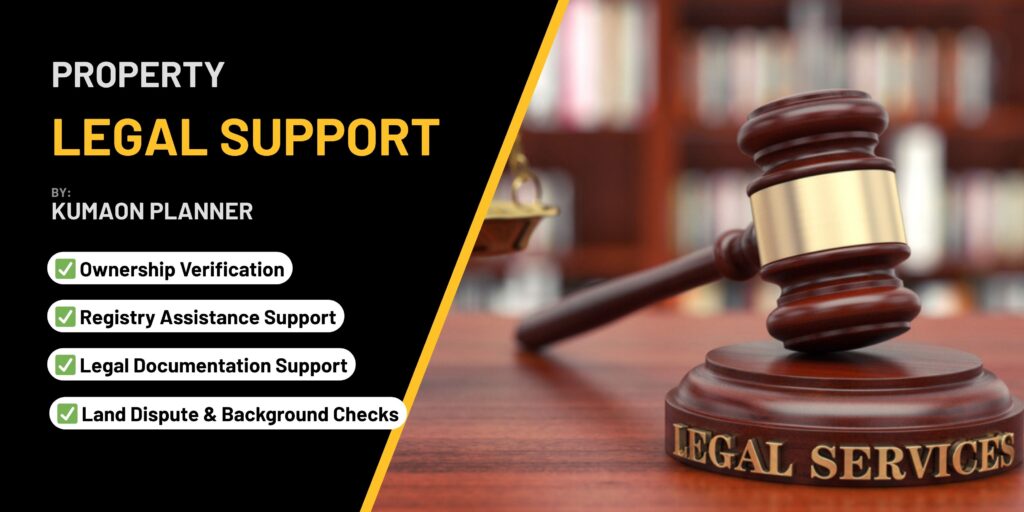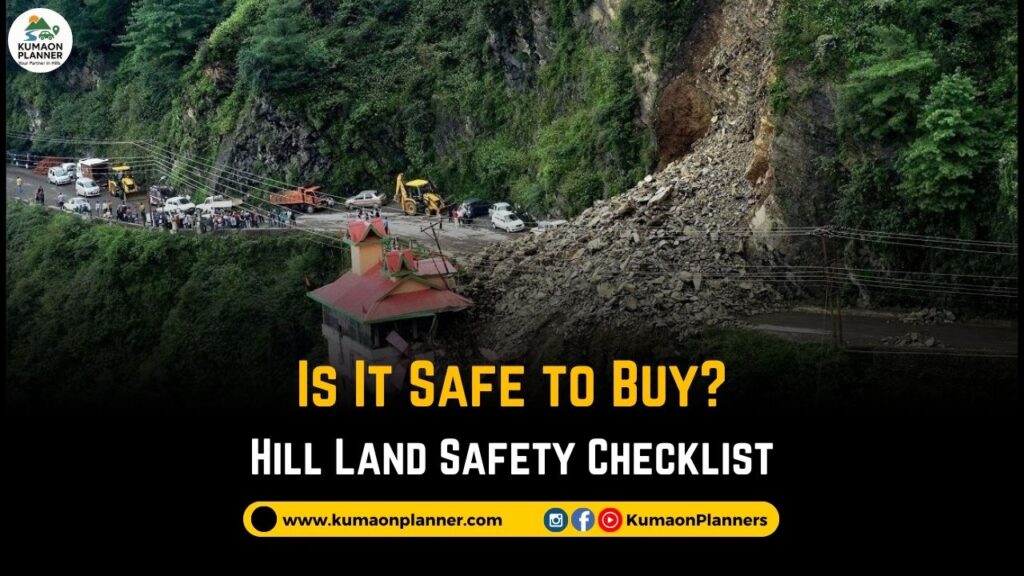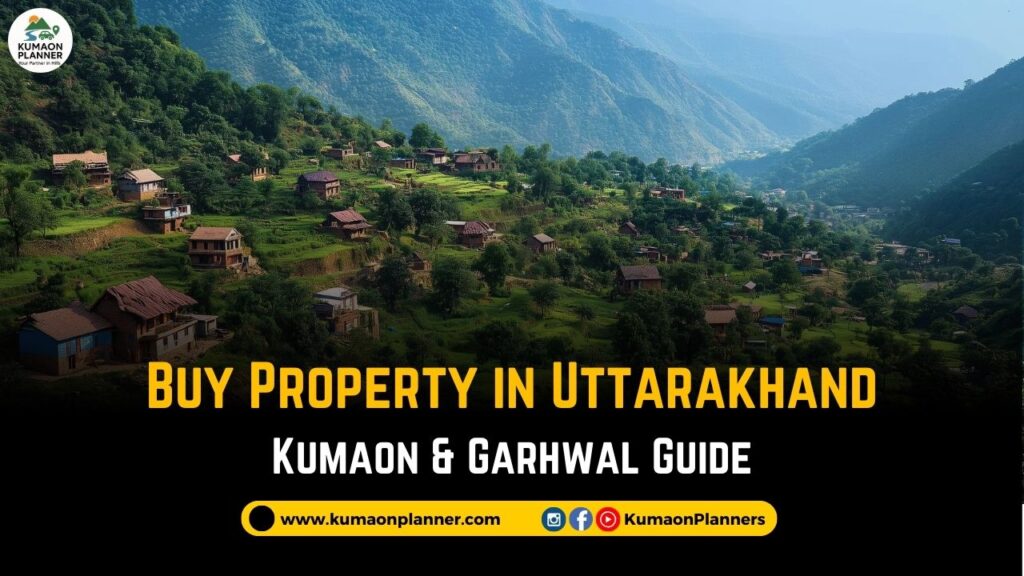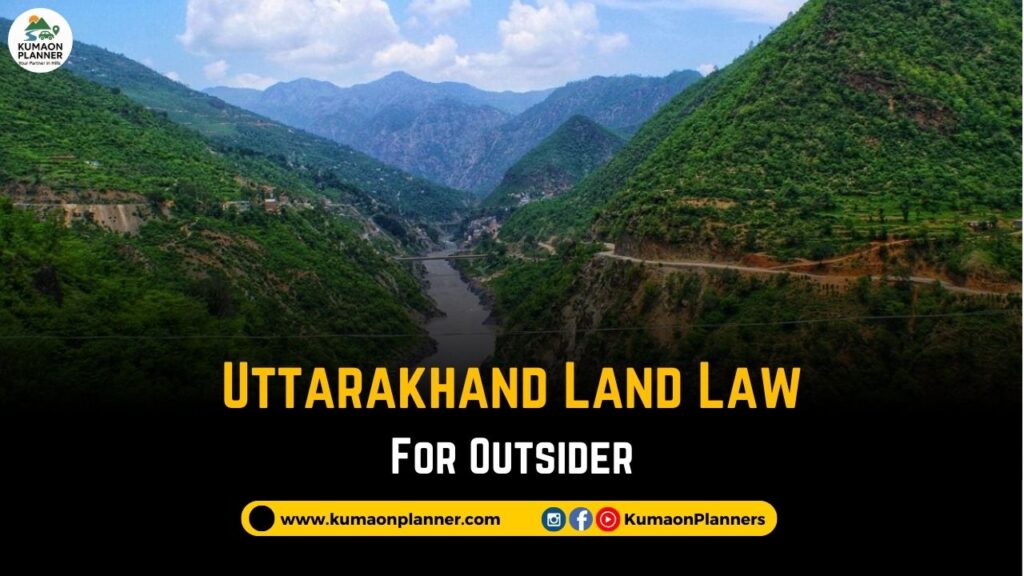Buying land in the hills of Kumaon is a dream for many — but if you don’t understand the terrain, that dream can become a disaster. Hill land comes with unique safety and legal risks, from slope failure to water drainage issues, and even land-use violations.
Whether you’re building a cottage or investing for the future, this guide helps you evaluate a hill plot’s safety — before you commit.

🧭 1. Check the Slope Angle (Avoid Steep Terrain)
The first rule of hill real estate: not all land is buildable.
- Plots on very steep gradients are prone to landslides, soil erosion, and foundation instability.
- Ideally, you want gentle to moderate slopes (under 25°) for safe construction.
- Use tools like Google Earth or on-site assessment to check slope levels.
- Get a geo-technical engineer’s opinion if it’s unclear.
Tip: Flat-looking land in photos often turns out steep on site. Never skip the visit.
💧 2. Observe Natural Drainage and Water Runoff
Water is one of the biggest forces in hill erosion.
- Does the land sit below a natural water channel or stormwater path?
- In heavy rain, will runoff water pass through your plot?
- Is the soil already showing signs of gullies or minor erosion?
If yes, it’s a red flag.
You’ll need proper drainage planning, retaining walls, and more investment — or risk flooding your future house.
🏞️ 3. Look for Existing Retaining Structures
Retaining walls help hold earth and prevent landslides.
- If nearby homes or roads have retaining walls, your plot might need one too.
- If your plot is cut into a slope, it must have proper reinforcement.
- Absence of any structure in a steep cut plot = future construction risk + high cost
Tip: Building a 6-ft retaining wall with proper foundation can cost ₹1,200–1,800 per sq. ft in hills.
🧱 4. Understand Soil Type and Load Bearing Capacity
Kumaon has a mix of rocky, clay, and loose soils, depending on location.
- Loose, sandy, or clayey soils on a slope are dangerous for building foundations.
- Soil tests help determine:
- Load bearing capacity
- Depth needed for foundation
- Moisture levels affecting strength
Ask the seller if soil testing has been done. If not, budget for a test (~₹15,000–₹30,000).
🛣️ 5. Check Access Road Stability
It’s not just the plot — the road to your plot matters too.
- Is the approach road built on stable ground?
- Are there landslide marks nearby (like sunken soil or cracked retaining walls)?
- Can materials (cement, steel) and workers safely reach the site in all seasons?
Bad access = permanent construction delays and higher transportation costs.
📜 6. Verify 143 Status and Land Use Legality
Even if the plot is “beautiful” — you can’t build on it unless the land is legally permitted for residential use.
- Check if land has been converted from agricultural to residential use (Section 143)
- Confirm that there are no encroachments, disputed borders, or forest land overlaps
🔗 Read: How to Apply for 143 in Uttarakhand
🧑💼 7. Ask Neighbors About Seasonal Issues
Local insight > online reviews.
- Ask if the area experiences land movement during monsoons
- Any history of cracks or slope shifts?
- What about waterlogging, tree uprooting, or damage in past 5 years?
Talk to nearby plot or house owners — they’ll tell you more than a broker will.
🧪 8. Check for Water Source and Groundwater Flow
A plot might look dry in March — but turn into a wet marsh during July.
- Is there natural seepage on the land?
- Is groundwater flowing below the surface?
- Will you have to construct a soak pit or install stormwater pipes?
Sometimes, the problem isn’t water shortage — it’s too much water under the foundation.
📸 9. Get a Site Survey and Drone Mapping
When in doubt, invest in visuals.
- A topographic map shows slope angle, elevation, and critical contours.
- A drone map or satellite overlay helps understand nearby construction, slope direction, and shadow areas
- Combine this with GPS pin and soil report — you’ll have a full land profile.
KumaonPlanner can assist with this via our network of licensed surveyors and drone operators.
✅ Hill Land Safety Checklist (Bookmark it Now)
Use this 9-point checklist when shortlisting or inspecting plots in the Kumaon hills. It helps you avoid risky land and plan better before you buy.
✅ Moderate slope under 25°
✅ No water flow or erosion signs
✅ No deep cracks or loose soil
✅ Road access is usable all year
✅ Land has legal 143 status
✅ No seasonal landslide history
✅ Basic soil test done or advised
✅ Surrounding area shows stability
✅ Retaining wall needed or already built
💡 Final Thoughts: Not All Plots Are Equal in the Hills
A beautiful hill view doesn’t mean the land is safe.
Always conduct:
- Physical inspection
- Legal checks
- Soil and slope analysis
- Cost estimate for slope management (walls, drainage, road)
Even better — work with a local supervision partner who can flag these issues early.
Related Articles:
👉 Cost of House Construction in Hills
👉 Hill Home Construction Mistakes to Avoid
👉 Choose the Right Contractor in Uttarakhand




